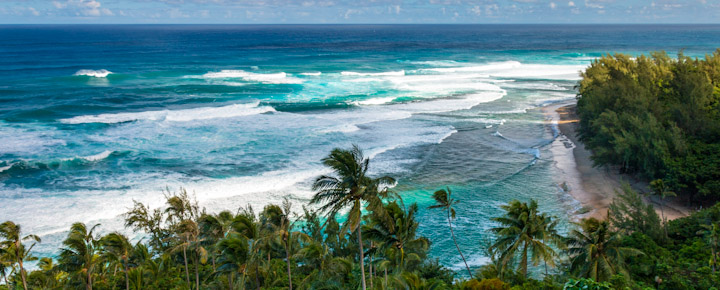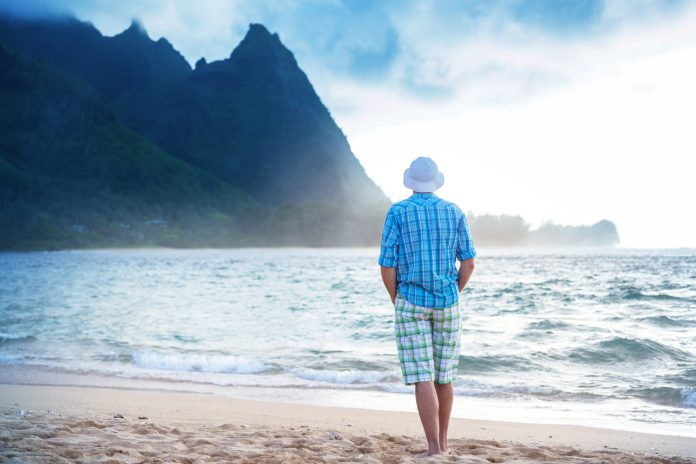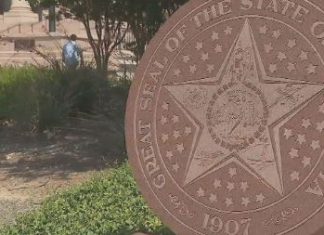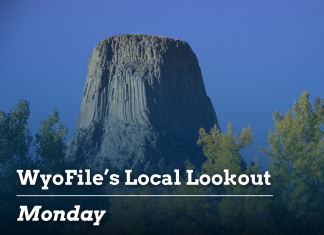When Sarah from Colorado tried to book Haena State Park access on North Shore Kauai for her December trip, she wrote to tell us she set an alarm for early November to log on at midnight Hawaii time, which was 3 a.m. for her. Even booking exactly 30 days in advance, her preferred dates and times were already gone within minutes.
Her family of four eventually secured spots, but only after spending a considerable amount of time over several days figuring out how to jump through hoops to make it work. She said she’s still confused about which parks require reservations, which need permits, and which don’t.
Her story is far from unique. Visitors and even residents now face the same question: what rules will they face by the time they arrive? They see headlines about new regulations, followed by uncertainty about whether those rules will be in effect. Across Hawaii, visitors face the same frustration with systems they say change faster than they can plan.


Rules that never seem settled.
Across the islands, policies aimed at managing tourism often launch with grand announcements but fade before they become familiar. Some systems, such as Hanauma Bay and Haena State Park, eventually work, and offering visitors multiple booking options can be helpful.
Haena State Park has a shuttle option. Hanauma Bay now offers both City of Honolulu reservations (opening 48 hours in advance at 7 a.m. and selling out in minutes) and more costly private tour packages, bookable 60 days in advance.
Meanwhile, other promised systems for high-traffic parks don’t materialize. Maui’s visitor parking programs, announced in 2022 for locations like the Kamaole Beach parks, are still not in place.
For visitors, this means confusion and pressure to meet deadlines in order to have a cohesive vacation. Rules announced for one county rarely match what’s happening on another one. The result isn’t lawlessness, just fatigue. Hawaii continually emphasizes the need for a balance between residents and travelers, but the constant revisions and uneven application of rules make that balance increasingly difficult to achieve.
Fees that rise faster than expectations.
Hawaii has increasingly turned to fees to fund park maintenance and manage visitor demand. Hotel taxes now total 19% statewide, among the highest in the country. Add to that resort fees in Waikiki that average $52 a night. Yet visitors still find broken restrooms at popular parks and roads that haven’t been repaired in years.
Some properties have now even added carbon or sustainability surcharges during the checkout process. Travelers keep paying more but see little sign that their money is improving the experience. It echoes what readers told us in Visitors Say Hawaii’s New Fees Cross The Line.
The housing contradiction.
Officials argue that restricting vacation rentals will make more homes available for residents, but the numbers don’t entirely support this claim. Thousands of listings could disappear over time, while rents continue climbing, and severe shortages persist. Hawaii needs more housing overall, yet the focus stays on limiting vacation rentals. The result is fewer options for travelers and no real relief for local families. Both sides lose.


Promises that fade.
Airport modernization was intended to speed up arrivals and departures, and while construction across the state continues, major improvements at the airports are being completed slowly, in phases. Honolulu’s rail project has been underway for more than a decade and still feels far from finished in any fully useful sense. Beach access and park facilities are stuck in studies and hearings. Meanwhile, visitors notice the cracks. Parking lots fill by mid-morning.
Even outdoor infrastructure suffers. Sacred Falls on Oahu has been closed since 1999 after a deadly rockslide. The Haiku Stairs have been off-limits since the 1980s and remain at the center of a long-running removal dispute. Despite years of discussion, nothing is resolved. Repeated trespassing shows how unmet demand, social media, and uneven enforcement have created new safety and liability risks.
A message that keeps shifting.
Hawaii’s marketing voice has evolved as the state works to define sustainable tourism. Campaigns around mindful travel, regenerative tourism, and high-value visitors reflect real efforts to find balance, though the shifting language can still feel unclear to travelers trying to understand what kind of visitor Hawaii actually wants and whether they still fit in. Families who saved for years to bring their kids now wonder if they’re still welcome. Repeat visitors, once the very core of Hawaii travel, who’ve supported the islands for decades, say they feel targeted instead of appreciated. The state can’t seem to decide what kind of tourism it actually wants or how to make it all happen.
Dependence that never ends.
For decades, Hawaii has promised to diversify its economy. Yet, visitor spending and hotel taxes still fund a significant portion of the state’s budget. Every time arrivals dip, panic follows. Hawaii discusses reducing its dependence on tourism while relying on it more heavily than ever, as explored in Is It Too Late For Hawaii To Diversify? Raising visitor costs without creating alternatives only makes the imbalance worse.
The cost of confusion.
Today’s visitors must check rental permits, parking rules, park reservations, and beach safety updates before even starting a Hawaii vacation. Trips that used to feel simple and spontaneous now require significant research. Longtime visitors comment that the uncertainty is exhausting. For many, Hawaii feels less like the effortless escape that once defined it and more like a test of patience and planning.
What could actually work.
Some systems do function when given time to settle. Hanauma Bay’s reservation model, while imperfect, now offers both advance booking through Roberts Hawaii and last-minute city options.
Other systems create confusion in different ways. Waimea Canyon and Kokee State Parks on Kauai have introduced parking fees and access rules, but upkeep and enforcement haven’t kept pace. Visitors find bathrooms in poor condition and maintenance spotty, with enforcement that varies by day.
North Shore Kauai’s permit system works well for those who understand it. The challenge isn’t that Hawaii can’t create workable policies. It’s that new announcements arrive before old systems have a chance to become routine and clearly communicated with those they impact.
Hawaii could benefit from a single statewide visitor information portal that consolidates park reservations, parking rules, permit requirements, and fee schedules across all islands and counties. Travelers shouldn’t need to search four county websites, multiple state agencies, and private operators just to understand basic access rules for vacation planning.
Hawaii has always managed competing demands. The islands can create tourism systems that work for everyone. What’s needed now is stability, transparency, and the patience to let good policies prove themselves.
What’s been your own experience navigating Hawaii’s changing rules?
Get Breaking Hawaii Travel News







